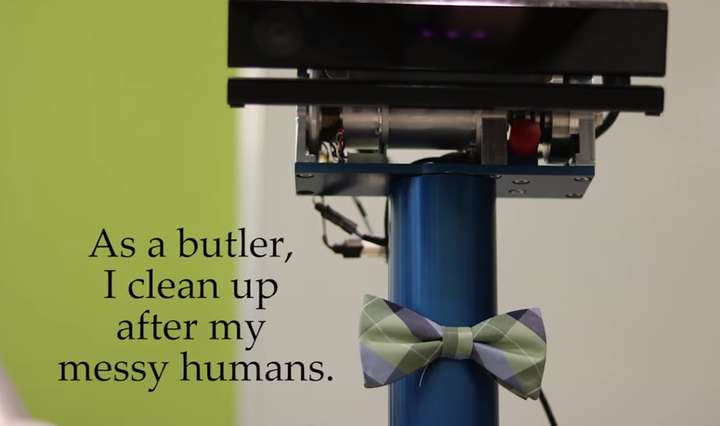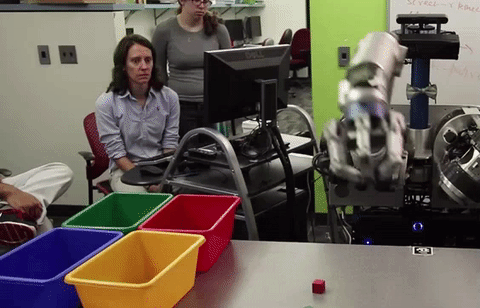
A robot designed to clear clutter has learned how to cradle items in its arms, the same way a human might hold a baby, Carnegie Mellon University said Wednesday. Even more remarkable, the robot seems to have tapped into this tender side all on its own.
"We never taught it that," Siddhartha Srinivasa, an associate professor of robotics at the school, said in a press release.
The robot, dubbed the Home Exploring Robot Butler (HERB), uses a series of algorithms to solve problems and move objects around. HERB's most remarkable feature is the ability to both recognize specific types of items and move them to certain areas. In a video shared by Carnegie Mellon, HERB can be seen locating blocks and sorting them according to color.

Srinivasa's goal is for robotic assistants to move out of factories and into your home. In a factory setting, robots can be programmed to follow a very specific routine, but homes are more chaotic. The ability to recognize and handle items according to context is key.
In other words: You need a robot butler that can understand what "grab me a beer" means. You wouldn't want one that opens the fridge and interprets every item within as the same thing. Nor would you want a robot that has to move every single item in the fridge to access your Budweiser.
"When a person reaches for a milk carton in a refrigerator, he doesn’t necessarily move every other item out of the way," Carnegie Mellon explained in its press release. "Rather, a person might move an item or two, while shoving others out of the way as the carton is pulled out."
“We need to either turn our homes into factory floors or enable robots to understand and work with the clutter and uncertainty in our homes.”
- Siddhartha Srinivasa, Carnegie Mellon University
The action of removing an item from a fridge seems so simple in human terms. You just reach out and grab it. But consider the fairly complex set of actions you're following when you do so. Your brain tells your arm to reach up and pull the fridge open. Your eyes locate what you want. Then you navigate "obstacles" in the way (some old pasta sauce, maybe, or a stick of butter), close your fingers around the drink, remove your arm while clasping it and push the refrigerator shut.
From a programming perspective, that's challenging: Machines lack your human intuition, so it's up to algorithms and artificial intelligence to get the job done.
"So, our algorithm learns to cradle the object in the same way you learn to solve the Rubik's cube," Srinivasa explained in an email to The Huffington Post. "We are also actively developing ... algorithms that simultaneously learn the rules of engagement as they solve problems. This is critical because physical properties like friction are hard to estimate and change all the time."
Put a different way, HERB learns according to context. It realized that the best way to transport a certain item was to cradle it, so that's what it did, expressing some measure of "creativity" in the process.
Srinivasa told HuffPost he hopes his team's research will bring us closer to robotic assistants in our homes.
"If we want robots in our everyday lives, we need to either turn our homes into factory floors or enable robots to understand and work with the clutter and uncertainty in our homes," Srinivasa said. "Our work takes a step towards solving that problem."
